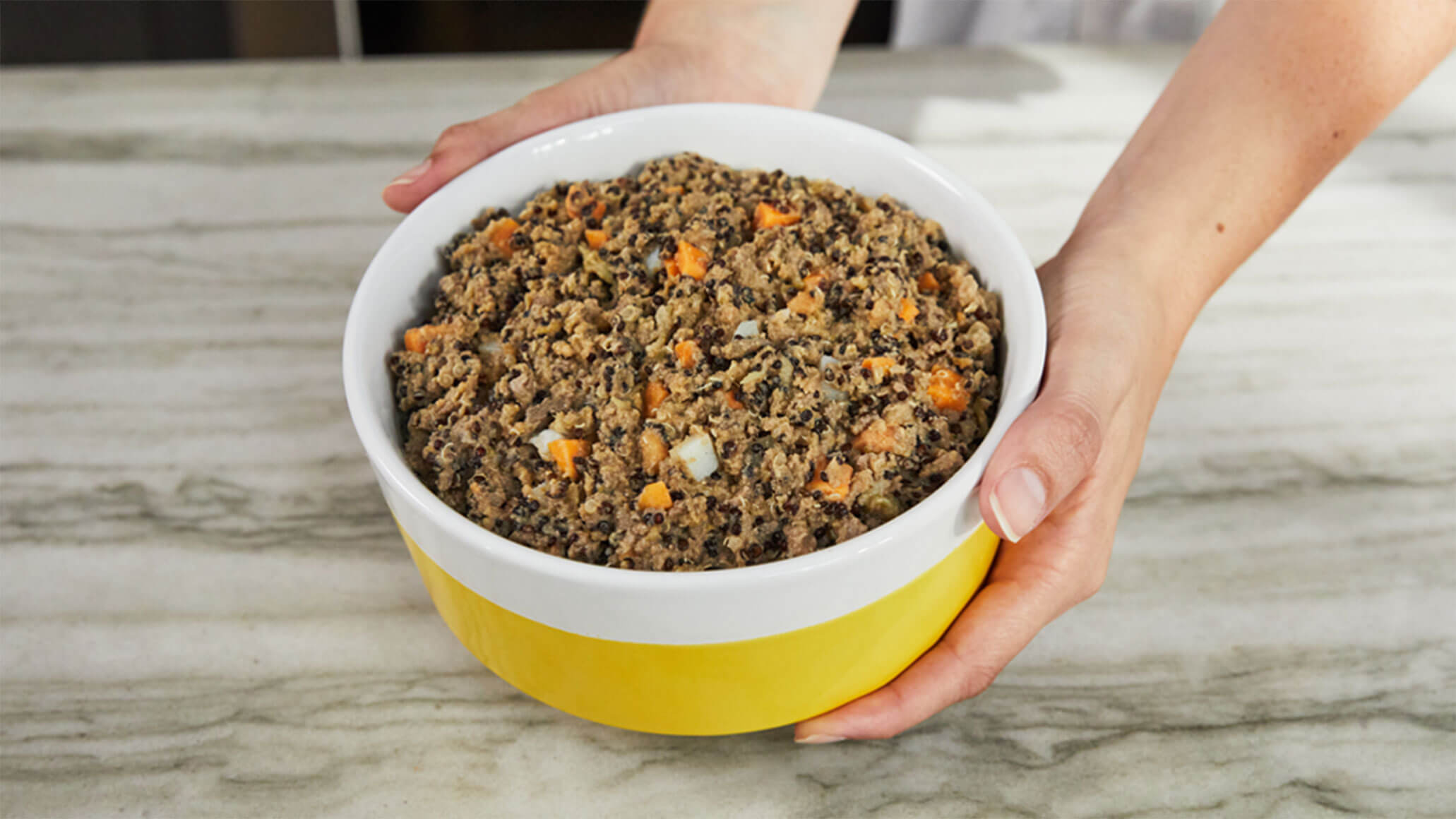Unveiling The Impact: Meat Byproducts In Dog Food – A Comprehensive Guide
The food you feed your dog plays a crucial role in its overall health and well-being. Many pet owners are unaware of the potential risks associated with feeding their dogs food containing meat byproducts, often believed to be low-quality ingredients that can compromise their health. This guide aims to provide a comprehensive understanding of meat byproducts in dog food, empowering pet owners to make informed decisions about their dog’s nutrition.
Meat byproducts are the non-muscle parts of slaughtered animals, excluding the head, feet, blood, stomach, and intestines. They can include organs such as the liver, kidneys, and lungs, as well as bones, cartilage, and skin. While meat byproducts can provide some nutrients, they are generally considered to be lower in nutritional value than muscle meat.

All-Meat Dog Foods – Guide, Benefits, Risks, Cost FAQ – Source breedingbusiness.com
Understanding Meat Byproducts in Dog Food
The use of meat byproducts in dog food is a common practice in the pet food industry. These ingredients are often used as a source of protein, although they may not provide the same quality of protein as muscle meat. Meat byproducts can also be a source of vitamins, minerals, and other nutrients, but their availability can vary depending on the type and amount of byproduct used.

Unveiling the Massey Ferguson 135 Injector Pump Diagram: A – Source mechanicsnews.com
History and Myths Surrounding Meat Byproducts
The use of meat byproducts in pet food has been a subject of debate for many years. Some pet owners believe that meat byproducts are harmful to dogs, while others argue that they are a safe and nutritious source of protein. It is important to note that the use of meat byproducts in pet food is regulated by the government, and manufacturers are required to adhere to strict safety standards.

lean beef pack – Tailford Meats – Source tailfordmeats.co.uk
Hidden Secrets of Meat Byproducts
While meat byproducts can provide some nutritional benefits, it is essential to be aware of their potential drawbacks. Some meat byproducts, such as bones, can be dangerous for dogs to consume, as they can splinter and cause serious injuries. Additionally, meat byproducts may contain contaminants, such as pesticides or hormones, which can be harmful to dogs.

Preventative Measures for Cancer_ The Impact of Food, Plastics, and – Source rumble.com
Recommended Practices for Meat Byproducts in Dog Food
If you choose to feed your dog food containing meat byproducts, it is essential to take steps to ensure that the food is safe and nutritious. Look for dog food brands that use high-quality meat byproducts and provide a clear list of ingredients. Avoid foods that contain excessive amounts of meat byproducts, as this may indicate that the food is not made with high-quality ingredients.

Goodness Gracious-Maker of Human Grade Dog Treats-Shares All – Source goodnessgracioustreats.com
Meat Byproducts in Dog Food: A Detailed Look
Meat byproducts can provide some nutritional benefits, including protein, vitamins, and minerals. However, it is important to note that they are not as high in quality as muscle meat. When choosing a dog food, look for one that uses high-quality meat byproducts and provides a clear list of ingredients.

BARF Diet for Dogs: A Comprehensive Guide | Darwin’s Natural Pet – Source www.darwinspet.com
Tips for Choosing Meat Byproduct Dog Food
When choosing a dog food that contains meat byproducts, it is essential to keep the following tips in mind:
1. Look for dog food brands that use high-quality meat byproducts.
2. Choose foods that provide a clear list of ingredients.
3. Avoid foods that contain excessive amounts of meat byproducts.
4. Consider your dog’s individual needs and preferences.

Homemade Lamb Dog Food Recipe | PetPlate – Source www.petplate.com
Meat Byproducts: A Comprehensive Understanding
Meat byproducts are a common ingredient in dog food, but it is important to understand their nutritional value and potential risks. By choosing dog food that uses high-quality meat byproducts and following the tips outlined in this article, you can help ensure that your dog is getting the best possible nutrition.

Meatmob Meat Specialty | News Detail – Source meatmob.com
Fun Facts About Meat Byproducts
In addition to their nutritional value, meat byproducts can also provide some interesting fun facts:
1. Meat byproducts are a valuable source of protein for many animals, including dogs.
2. Meat byproducts can be used to make a variety of dog food products, including kibble, canned food, and treats.
3. Meat byproducts are often used in pet food because they are a cost-effective way to provide protein.

Plants | Free Full-Text | Sustainable Isolation of Bioactive Compounds – Source www.mdpi.com
How to Identify Meat Byproducts in Dog Food
To identify meat byproducts in dog food, look for the following ingredients on the label:
1. Meat meal
2. Meat byproducts
3. Animal fat
4. Poultry byproducts
5. Fish meal
![@aircanada [domestic/business class] breakfast starter. VGML option is @aircanada [domestic/business class] breakfast starter. VGML option is](https://i.pinimg.com/originals/b9/37/9e/b9379e94873d2397432e2380b3fd7885.jpg)
@aircanada [domestic/business class] breakfast starter. VGML option is – Source www.pinterest.ca
What if Your Dog is Allergic to Meat Byproducts?
If your dog is allergic to meat byproducts, you should avoid feeding them any dog food that contains these ingredients. There are a number of hypoallergenic dog food brands that do not contain meat byproducts.
Listicle: The Benefits of Meat Byproducts in Dog Food
Here is a listicle of the potential benefits of meat byproducts in dog food:
1. Meat byproducts can provide protein, vitamins, and minerals.
2. Meat byproducts can be a cost-effective way to provide protein.
3. Meat byproducts can be used to make a variety of dog food products.
Question and Answer: Meat Byproducts in Dog Food
Here are four questions and answers about meat byproducts in dog food:
1. What are meat byproducts?
2. Are meat byproducts safe for dogs?
3. How can I identify meat byproducts in dog food?
4. What should I do if my dog is allergic to meat byproducts?
Conclusion of Unveiling The Impact: Meat Byproducts In Dog Food – A Comprehensive Guide
Meat byproducts are a common ingredient in dog food, and they can provide some nutritional benefits. However, it is important to be aware of the potential risks associated with meat byproducts, such as the possibility of contamination and the fact that they may not be as high in quality as muscle meat. By choosing dog food that uses high-quality meat byproducts and following the tips outlined in this article, you can help ensure that your dog is getting the best possible nutrition.